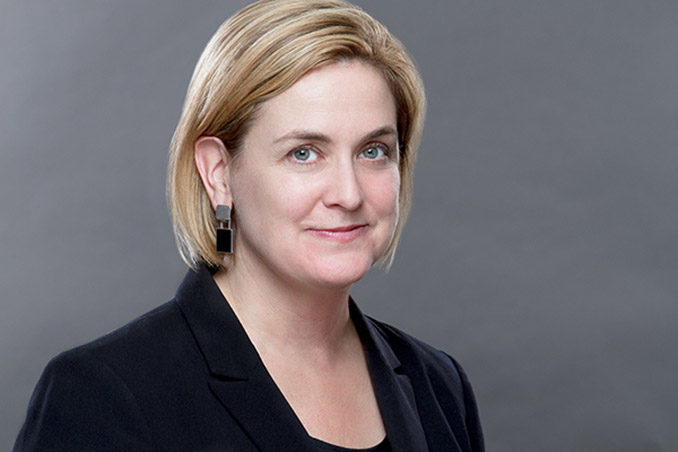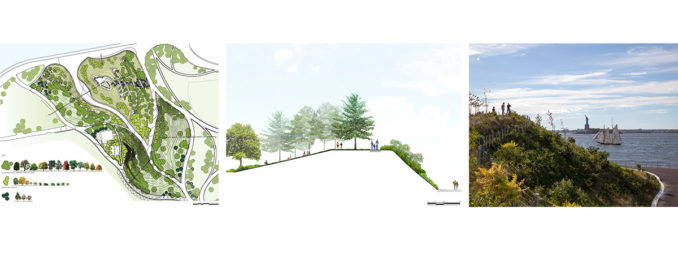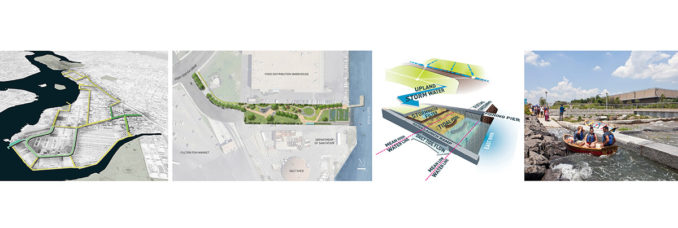 WLA recently had the chance to interview Molly Bourne, a Principal at MNLA, a New York City-based landscape architecture firm. A Maryland native, Molly brings over 26 years of design experience to each of her projects in which she consistently leverages a combination of award-winning design talent and creative collaboration. She personally navigates each of her projects from concept through construction and directs numerous multidisciplinary consultant teams on high-profile initiatives for waterfront parks, cultural institutions, and urban revitalization.
WLA recently had the chance to interview Molly Bourne, a Principal at MNLA, a New York City-based landscape architecture firm. A Maryland native, Molly brings over 26 years of design experience to each of her projects in which she consistently leverages a combination of award-winning design talent and creative collaboration. She personally navigates each of her projects from concept through construction and directs numerous multidisciplinary consultant teams on high-profile initiatives for waterfront parks, cultural institutions, and urban revitalization.
A graduate of the University of Florida, Molly holds a Bachelor of Arts in Landscape Architecture. She actively fosters the future of design through her work with the ACE Mentor Program for New York City high school students and as a guest critic at the University of Pennsylvania. Most recently, she has been leading MNLA’s efforts for Waterline Square. This nearly decade-long effort creates an unprecedented approach to urban living that connects park front beauty from Central Park to Hudson River Park along the central corridor of West 60th Street.
WLA | What made you want to become a landscape architect?
Molly | There was not a clear plan or straight line to landscape architecture for me.
I have always been interested in making art, drawing, and learning about science. My father was a civil engineer and he used to drive by stormwater management ponds that he had designed on the eastern shore of Maryland and describe how they worked. I think that exposure gave me a curiosity about the built environment and to think about what else was going in the landscape besides just scenery.
I was studying art and botany in college without any direction and then learned about landscape architecture and thought it could be a good way to combine my interests. I graduated from the University of Florida in 1992 and moved back up north to Baltimore. Because of the recession at the time, there were very few jobs so I took a position as a site planner at an engineering firm. I was learning helpful technical skills and teaching myself computer programs but I needed a creative outlet and volunteered at the Neighborhood Design Center in Baltimore. There I collaborated with communities and schools to help them create projects which could raise money or apply for grants; this changed my perspective and relationship to landscape architecture. I found that its ability to be an agency of change and to improve people’s connectivity to each other and to their environment was powerful and optimistic. I knew then that I wanted to work on projects that were accessible to many people from all walks of life and work for firms that were doing public work.

WLA | What is your approach to a new project?
Molly | I enjoy all phases of projects but I do love the beginning of a project when all is new and the process is so much about discovery. If I am able, I like to experience the site first hand without too much research. (of course, technology has changed this). Many of our projects are in urban areas so I tend to walk or bike to the site a few times at different hours. Remaining open to the first impressions of the site and imagining what could be without imposing or needing an answer usually sparks my imagination for the beginning of a conceptual framework. Then it’s time to really dive into research and unearth what has already been studied or discover relevant ecologies, histories and uses that help inform the design process. Research is an important, ongoing part of the process, and informs every phase from concept to specifications.

WLA | Describe your approach to landscape architecture
Molly | My approach is a combination of listening, finding opportunities in the constraints and using time as a tool. Listening is a very under-rated skill in the design profession and starts with the site. The inherent qualities of the site are the most important drivers of design. Listening continues with the communities you are working with and with your consultant team who provide insights into areas that are not necessarily in our purview. Our ability to communicate graphically and verbally depends on this ability to listen. Some of our most inspiring projects begin with obstacles and challenges that seem insurmountable. Being an opportunist and optimist about how the constraints of the problem can be reframed and become part of the solution works two-fold. You end up really cozying up, knowing and demystifying the constraint, which allows your process to be more open. I love the way time is used as a tool in landscape architecture. It provides a dimension that gives perspective, flexibility, and adaptability. The duration of time can be seasonal, tidal, or a 24-hour programming clock. However, this lens allows you to imagine the space in different time scales and with bigger forces at play which is very freeing.

WLA| What is the most rewarding part of being a landscape architect?
Molly | This profession is a generalist discipline that allows you to continue learning. It is rewarding to design spaces where the land can be healed and where people can live out their daily lives. While creating solutions is important and rewarding so also is the tenacity to be an advocate for the expansion of public open space and for change. Landscape architects are uniquely situated to be in this role. Keeping our eye on the need for change in projects, with agencies, with clients and weaving that change into our designs sometimes beyond what is presented to us seems more than necessary right now. It allows the design dialogue to keep pace with forces impacting society and the environment. It seems imperative to find ways to stretch the public realm to be more inclusive, performative and multi-valent. This feels like a way forward in an increasingly pessimistic environmental future.
I am very interested in finding venues and activities that take our voices outside the profession into a larger dialogue with other communities. I feel that if we are going to be effective authors of change we need to stop preaching to the choir. I find working with high school students in the ACE Mentor program to be an insight to other points of view. ACE students come from all over the five boroughs and have very diverse interests and voices. They really inspire me with their insights, drive, and creativity.
I think it is critical as the second generation for the practice to evolve and move forward while building on the solid foundation that was created. I have the interesting experience of working for MNLA in 1999 and then again since 2005 and seeing and helping it grow up. This evolution will continue and I am happy to have partners that are so open to these ideas.
WLA would like to thank Molly for her time in answering our questions. You can find out more about MNLA at https://www.mnlandscape.com/
